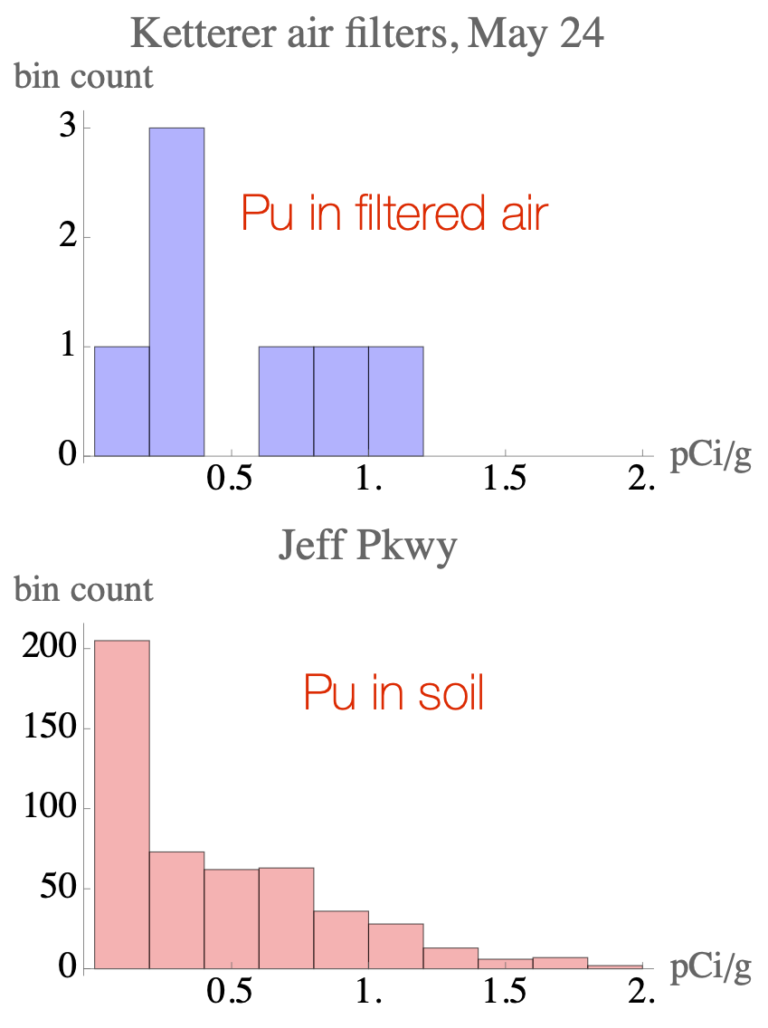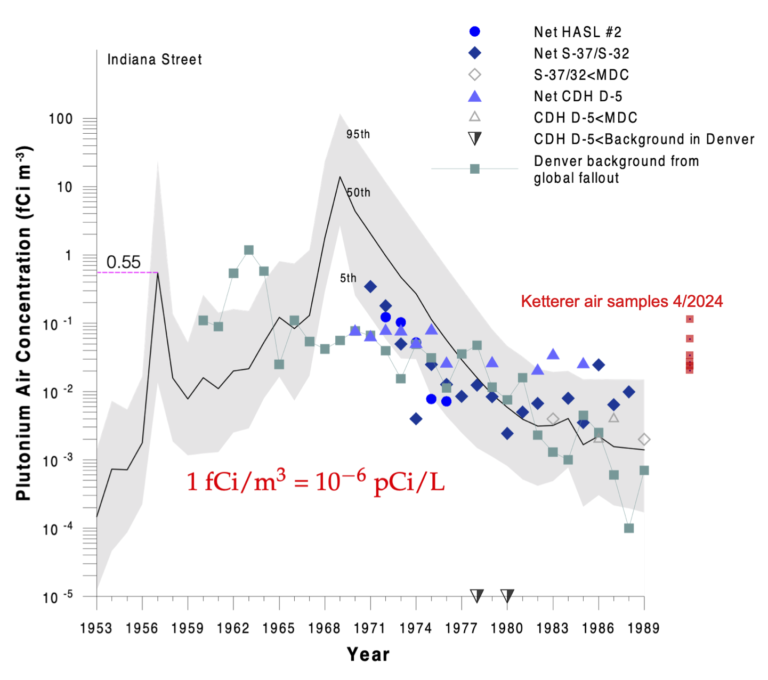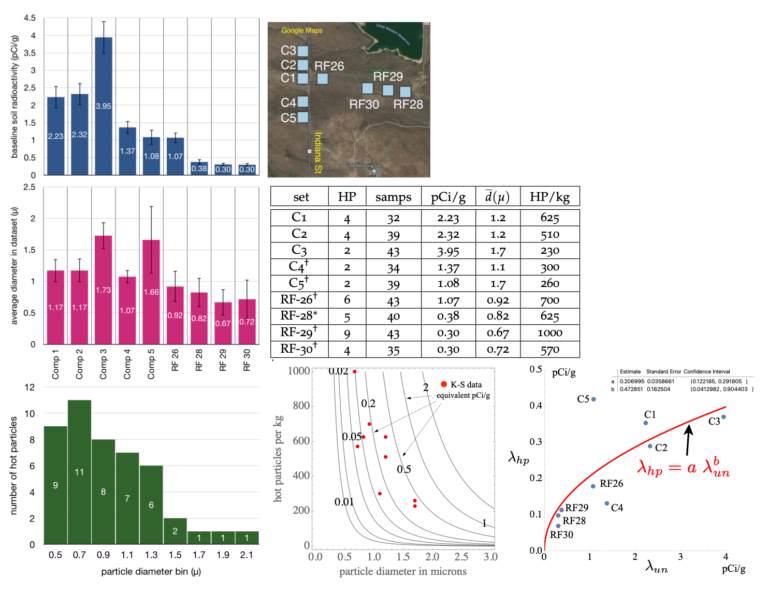
Aficionados of Rocky and Bullwinkle will remember Mr. Peabody’s Improbable History (which included his boy, Sherman) whose credits were an entertaining parade. After all came Old Bill the Janitor Man sweeping up messes, above.
Factual but not truthful (thanks to Michael Malice for the example)
Report: “A supermarket has gone out of business.” Factual and truthful
Headline: “Store owner refuses to sell food to hungry kids.” Factual but not truthful
Straw man: an intentionally misrepresented proposition that is set up because it is easier to defeat than an opponent’s real argument
Anti-nuclear groups continue to act as if the Rocky Flats “question” is whether or not plutonium is detected in soil and air, as if the very existence is a death sentence. Its presence has been known and measured since the 1970s. The only actual question is whether what is present represents a health risk (and that too has been understood since the early 1980s).
Michael Ketterer, a retired Ph.D analytical chemist with expertise and peer-reviewed journal articles concerning detecting actinides (radioactive isotopes) in soil, has proven a useful technician for anti-nuclear groups because he never proceeds beyond the factual to the truthful. His work is technically reliable, and thus provides useful information, ironically, with which to refute the claims of those who employ him. As a colleague concurs, “he does reliable work but his interpretation is usually off and the anti-nuclear people usually take it completely out of context”.
What does it mean when a Ph.D decides not to estimate the public health implications of his or her work? To me this is intellectual dishonesty, possibly a consequence of the financial support of his work by the Rocky Mountain Peace and Justice Center. I have written Dr. Ketterer several times requesting clarification about the funding which permits him to carry out his measurements, but he has never responded. In addition, Peace&Justice appears to own the copyright to Ketterer’s work, which means his work will never be published in peer-reviewed scientific journals.
The first claim at right was demolished via many citations of work on “hot particles”, which are responsible for almost all exposure to plutonium by nuclear plant workers, including Rocky Flats workers, for whom this claim is an insult. The DOE sponsored many of these studies! See this document. The second claim is factually correct, but there was never a “grave threat”. Direct calculation of the number of inhaled hot particles required to raise the lifetime risk of cancer by 1% (marginally detectable) ranged from 180,000 to 3.2 million. 50-year doses of inhaled hot particles of Ketterer size ranged from 0.0074 to 0.043 millisieverts, roughly comparable to the dose from an air round trip from Los Angeles to New York City. Read the previous document and the two-sided flyer here.
These claims demonstrate complete lack of familiarity with the published literature on Rocky Flats and Rocky Flats workers, and ignorance of the International Commission on Radiological Protection. Each is remarkable in a “technical expert” cited by anti-nuclear groups.
The answer from the 1970s) is of course yes. The implication is that this represents danger, the ploy invariably used by anti-nuclear groups. If an investigator decides to ignore other measurements whose consequences were more carefully analyzed, or by refusing to examine radiation dose (itself a remarkably refined discipline), this is as far as anti-nuclear groups can carry their argument.
In his affadavit entitled Detection of airborne plutonium in air filters collected along Indiana Street under the episodic high-wind conditions of April 6, 2024 he stated
“I therefore concluded that it was my individual responsibility as a knowledgeable, proactive United States citizen, and as resident of Colorado possessing appropriate professional skills and with access to the essential lab capabilities, to address the following question:
Why this pompous prelude and the `straw man’ in the right column? This is insulting to the knowledgeable public and patronizing to downwinders. I could argue, “It is my obligation as a professional physicist, aware of available data about Rocky Flats and of the radiation protection framework due to the International Commission on Radiological Protection, to answer the question: how do the plutonium quantities detected by Dr. Ketterer since 2019 compare with natural radioisotopes in soil and air?”
Apart from the fact that winds strong enough to resuspend dust occur about 6-7% of the time on Rocky Flats, Dr. Ketterer appears to have overlooked that his own data shows that radon levels outdoors (about 0.4 pCi/liter) are about 3.3 million times larger than airborne Pu levels he himself measured. Read more here.
“Decades of USDOE and CDPHE studies to date have failed to recognize and characterize Rocky Flats originating PuO2 particles and have not assessed their risks to human health.” [Ketterer and Szechenyi 2019-2020, poster, interim report.]
“Particles of these dimensions are amenable to transport under strong wind conditions, and represent a grave hazard for human inhalation and pulmonary retention.” [same source]
The areas examined were “cherry-picked” from Ketterer’s earlier Rocky Flats work in order to find hot particles. Given that the median radioactivity is about 46 pCi/g, the analysis of his data (contour plot) shows that, where present, hot particles contribute not more than about 0.5 pCi/g, about 92 times less than natural (alpha+beta) radioactivity on the eastern Refuge boundary. This is not the point Dr. Ketterer wanted to make, but he failed to carry out anything more than the bare minimum analysis of his own data.
Arvada Press, May 30, 2024: Plutonium found in Indiana Street air filters near Rocky Flats; Boulder Commissioners reconsider trail project
High winds carry plutonium-laden dirt from former weapons plant to filters on Indiana Street, experts say
Here’s an example of the logical fallacy known as the “straw man”:
Is there plutonium, originating at the Rocky Flats COU and/or buffer zone, being carried towards non-Federal lands and populated areas, under the episodic high-wind conditions that occur regularly onsite?”


